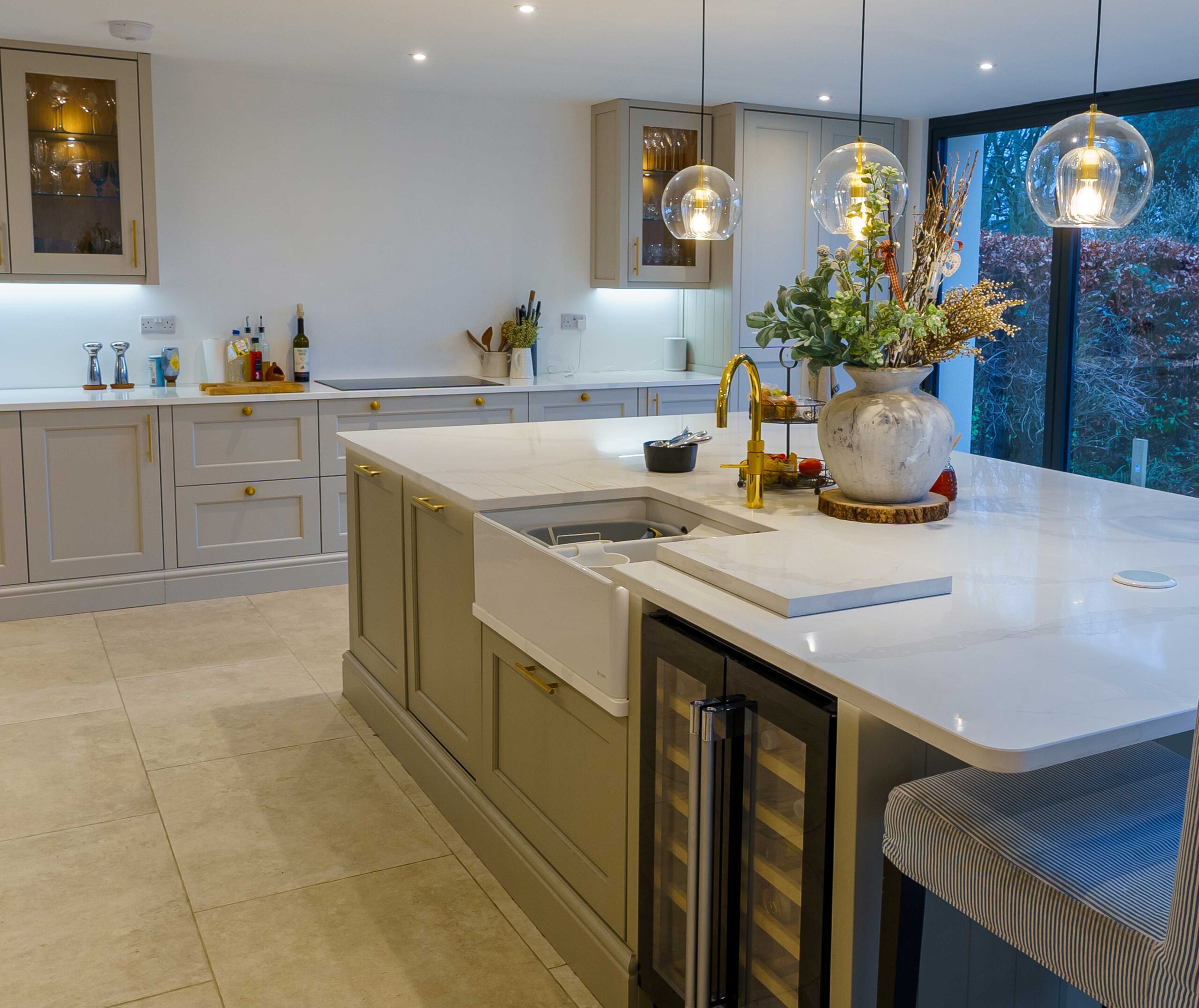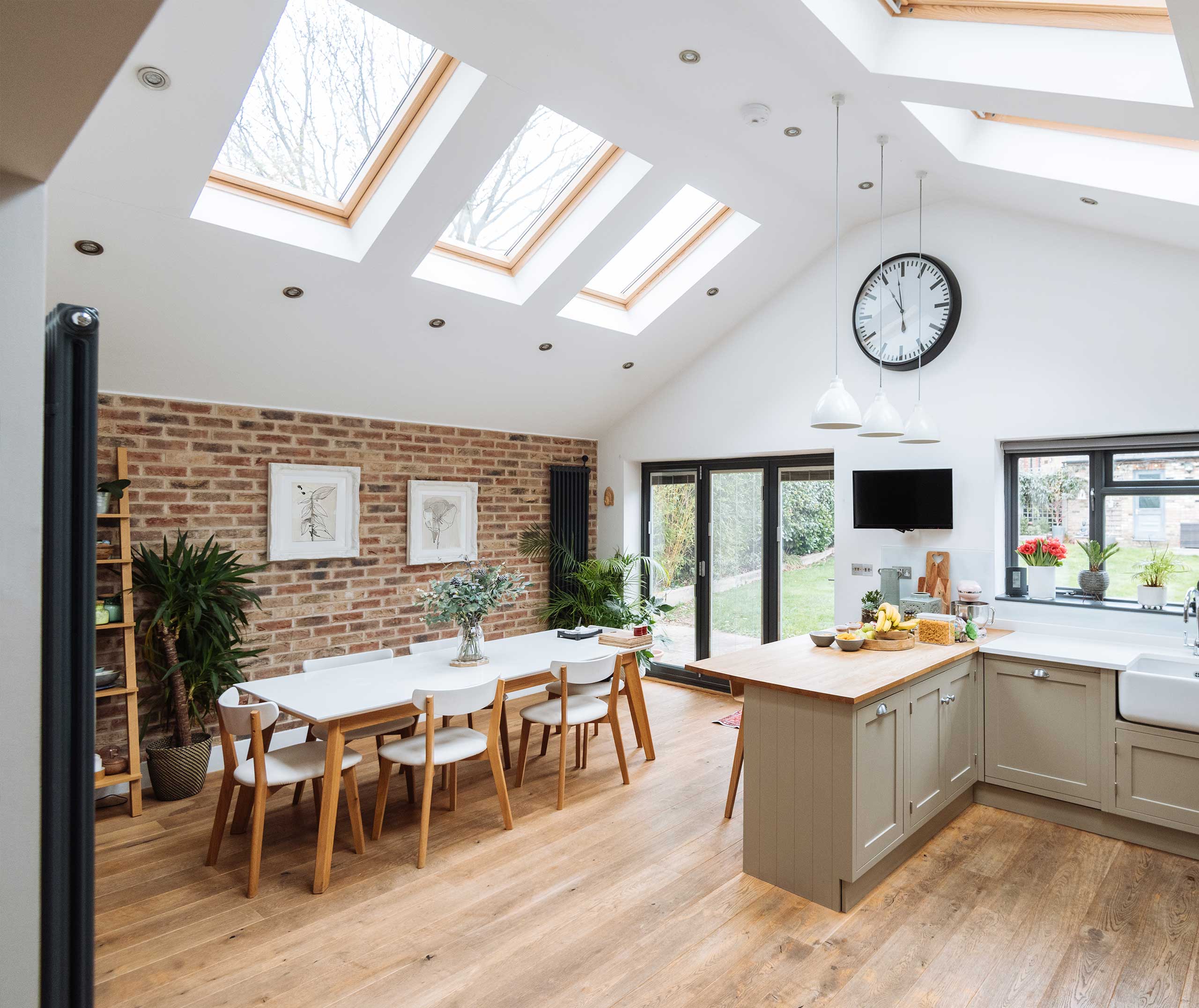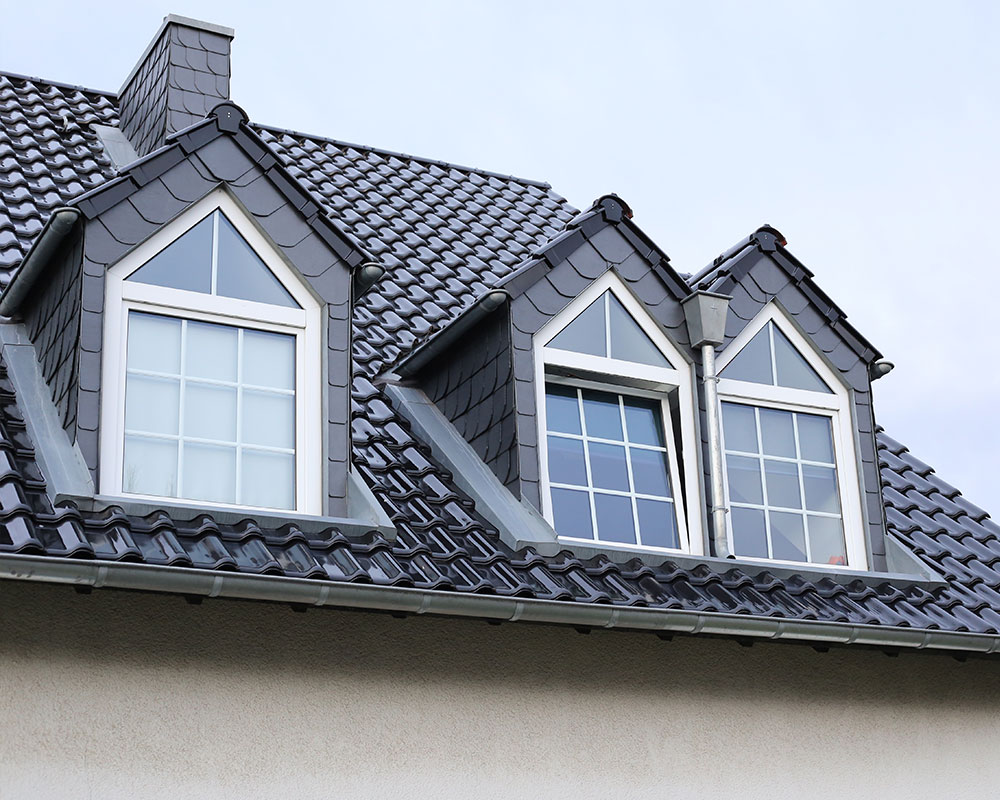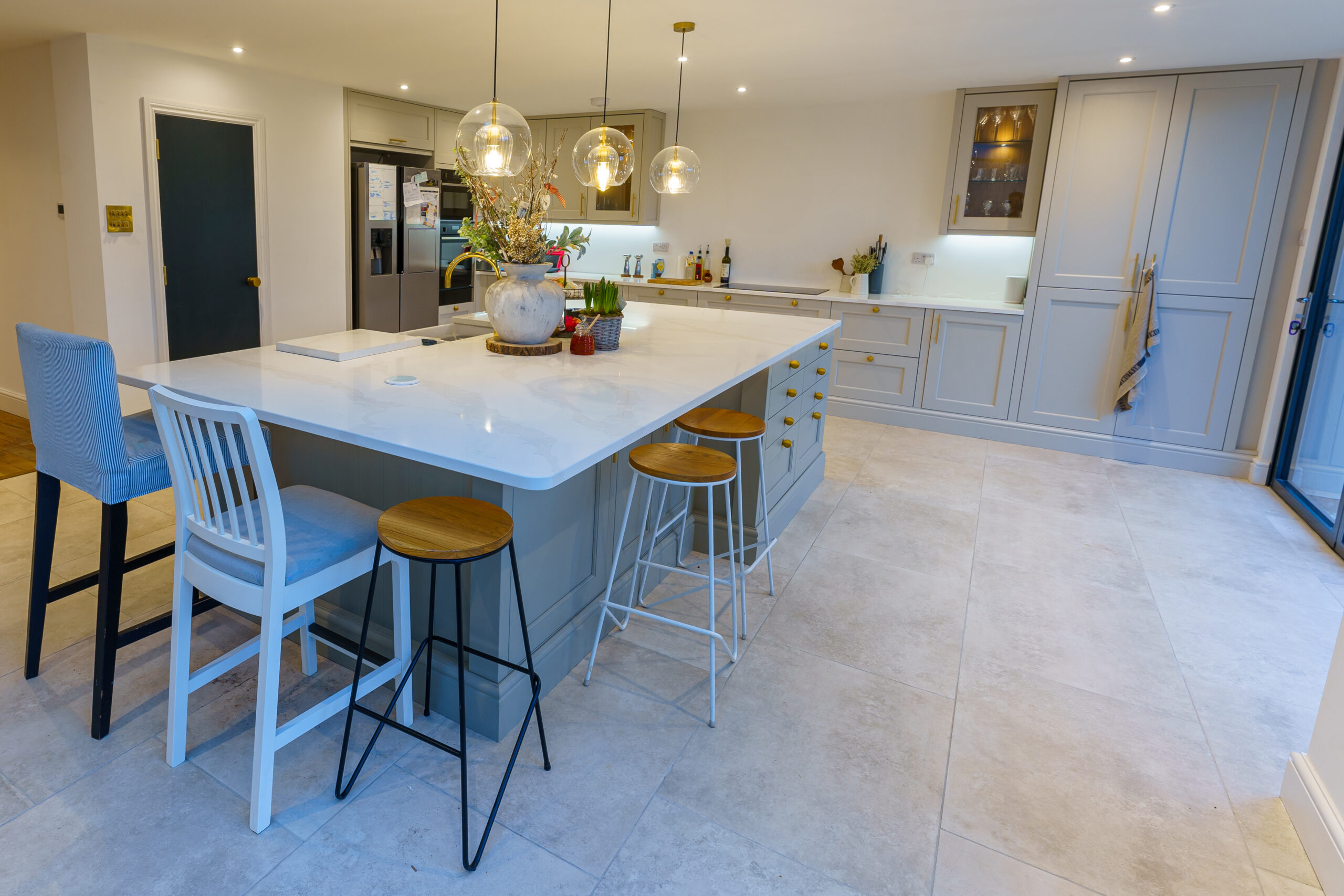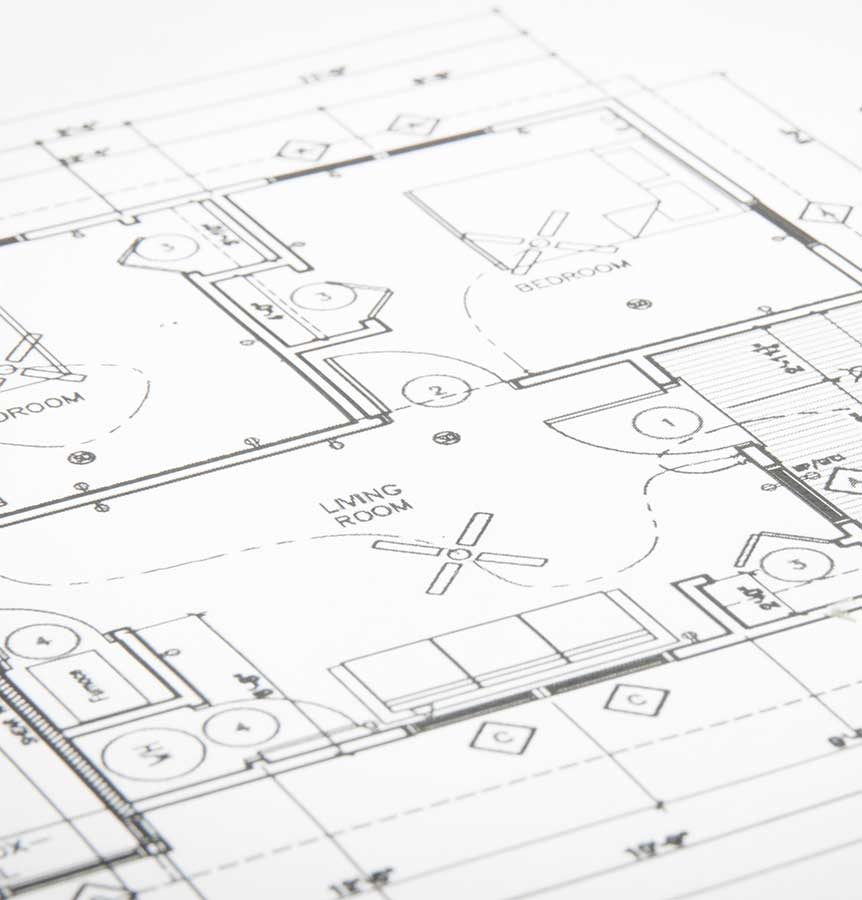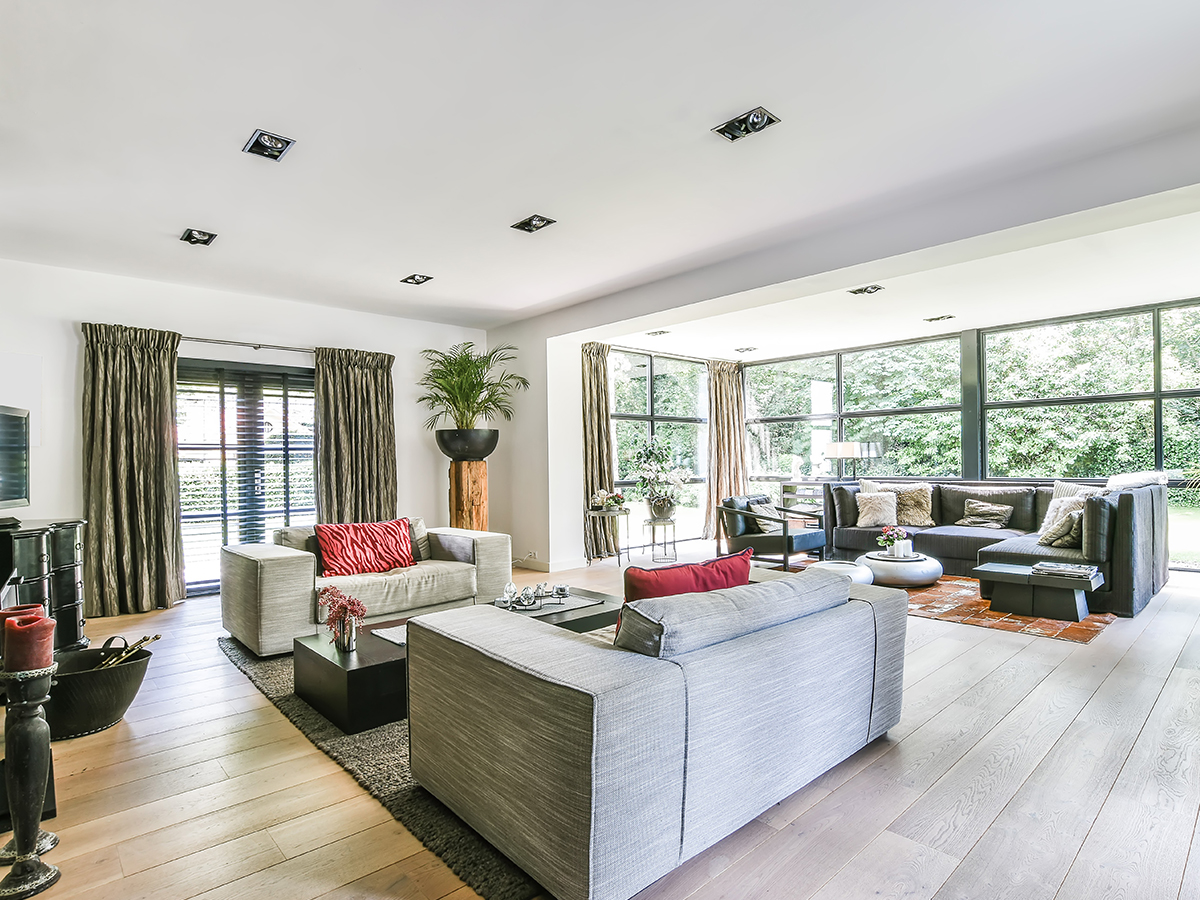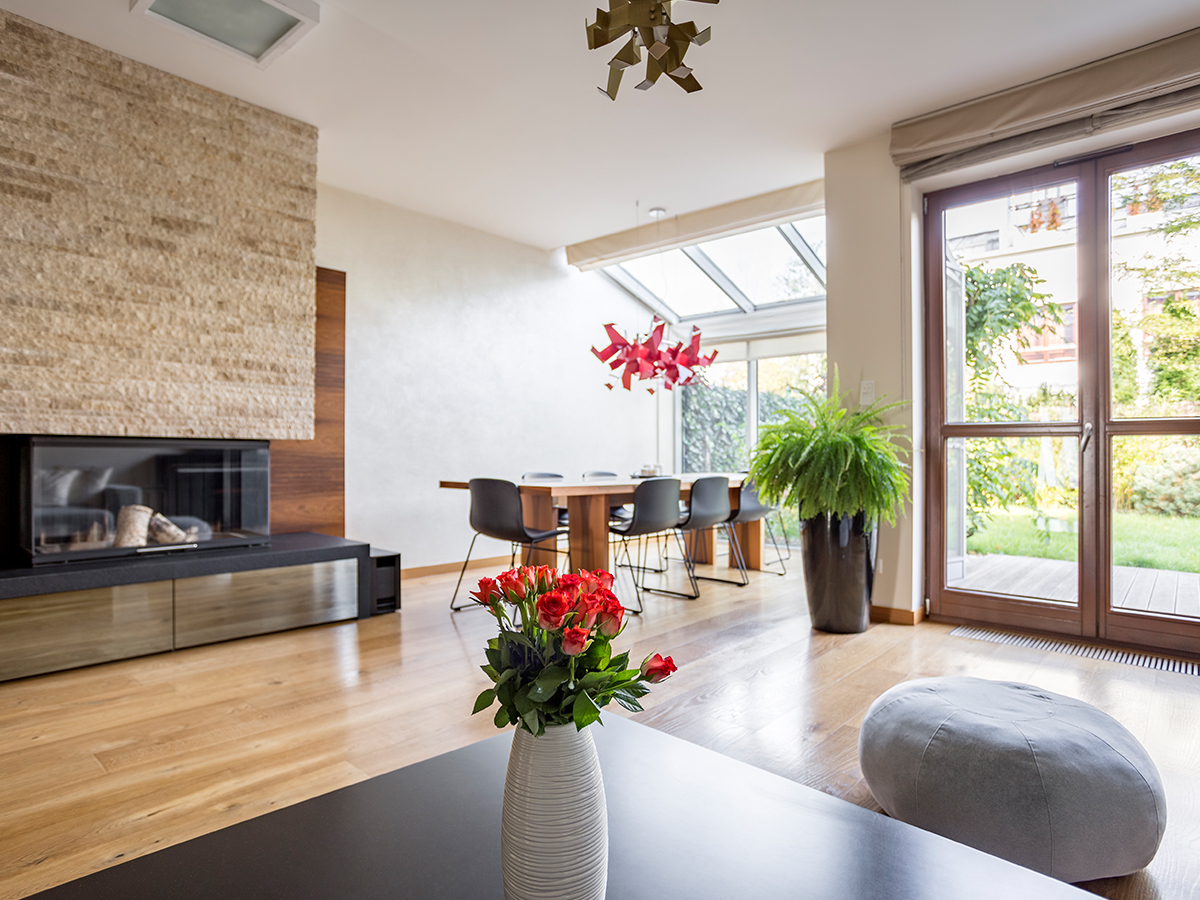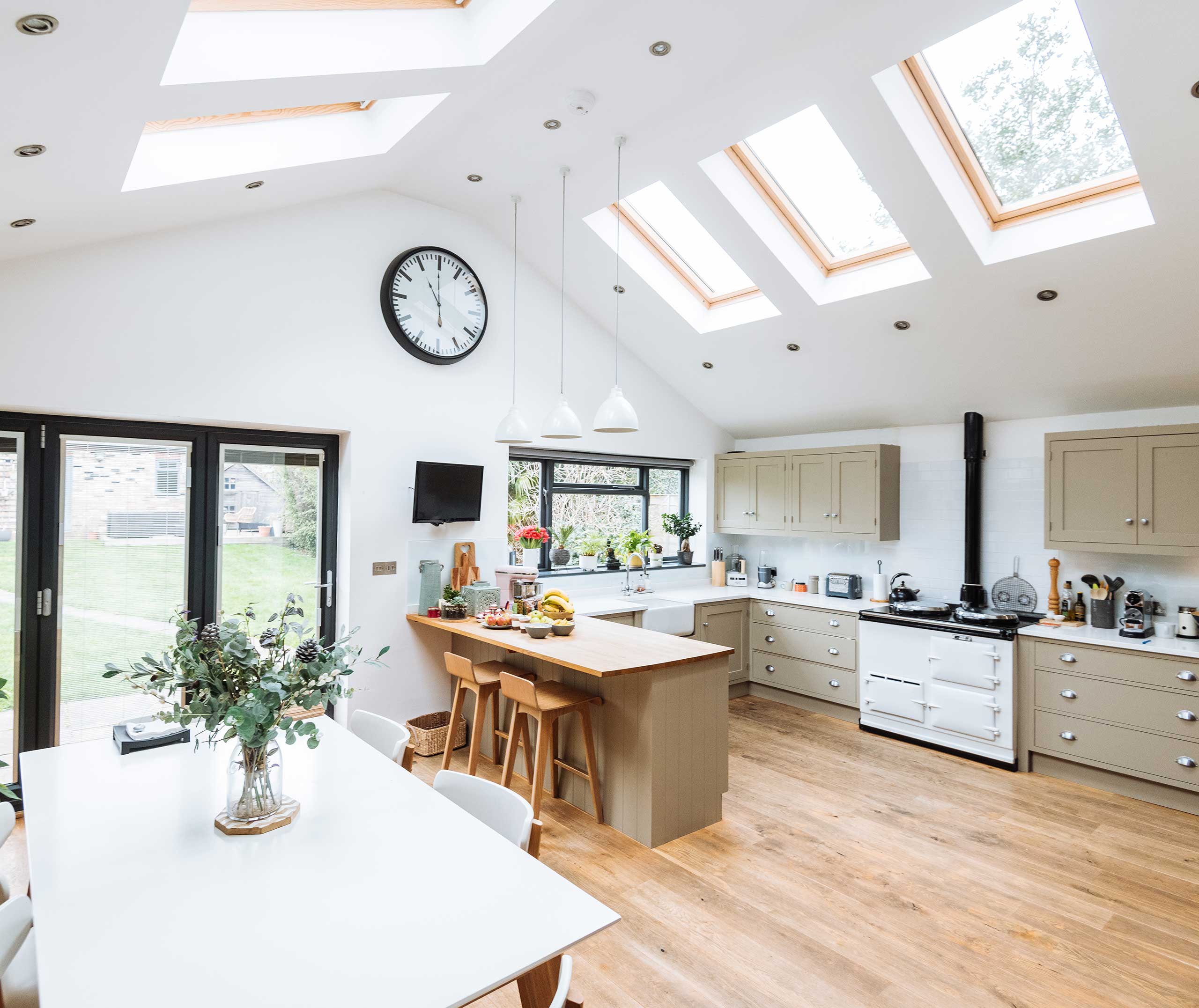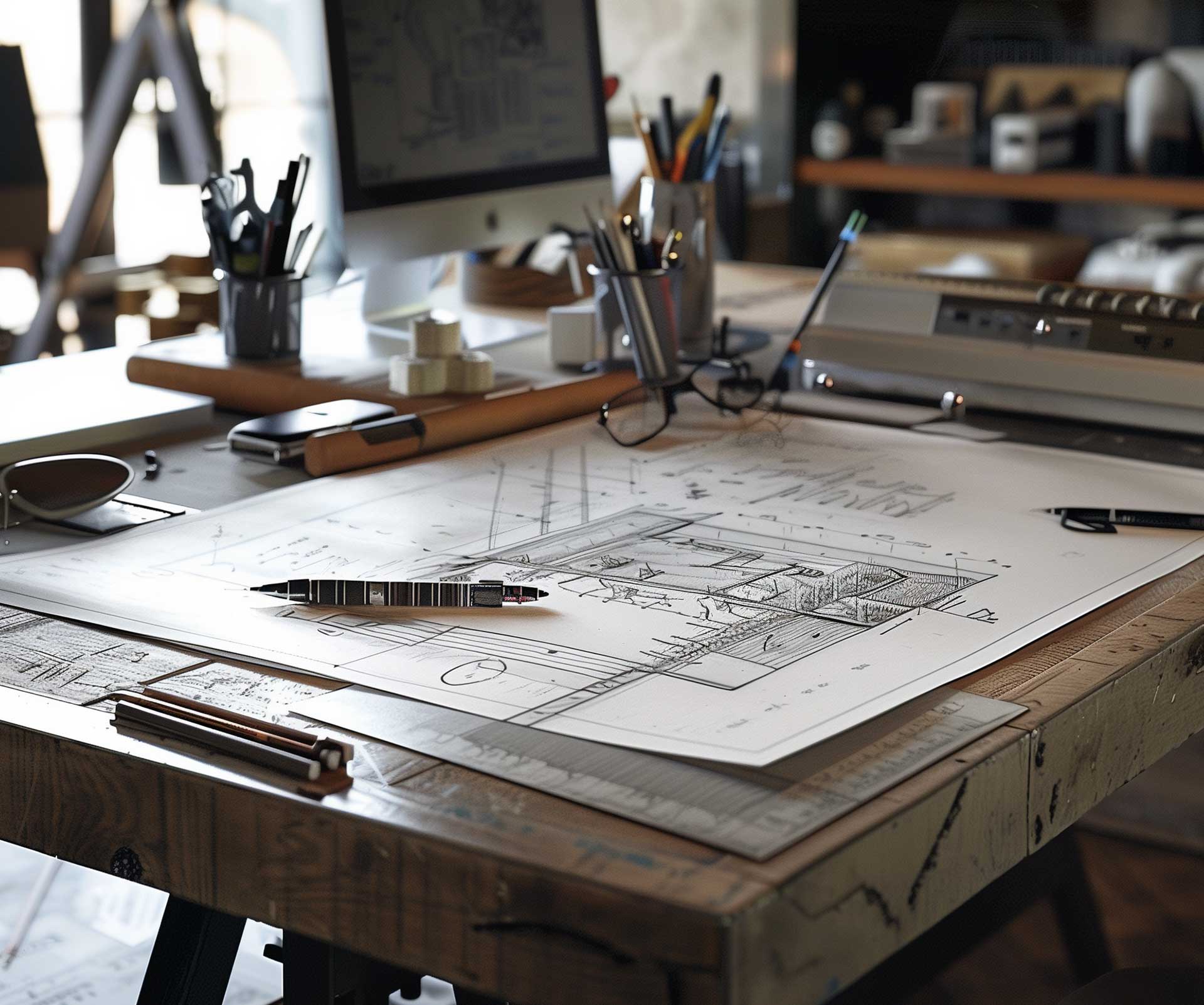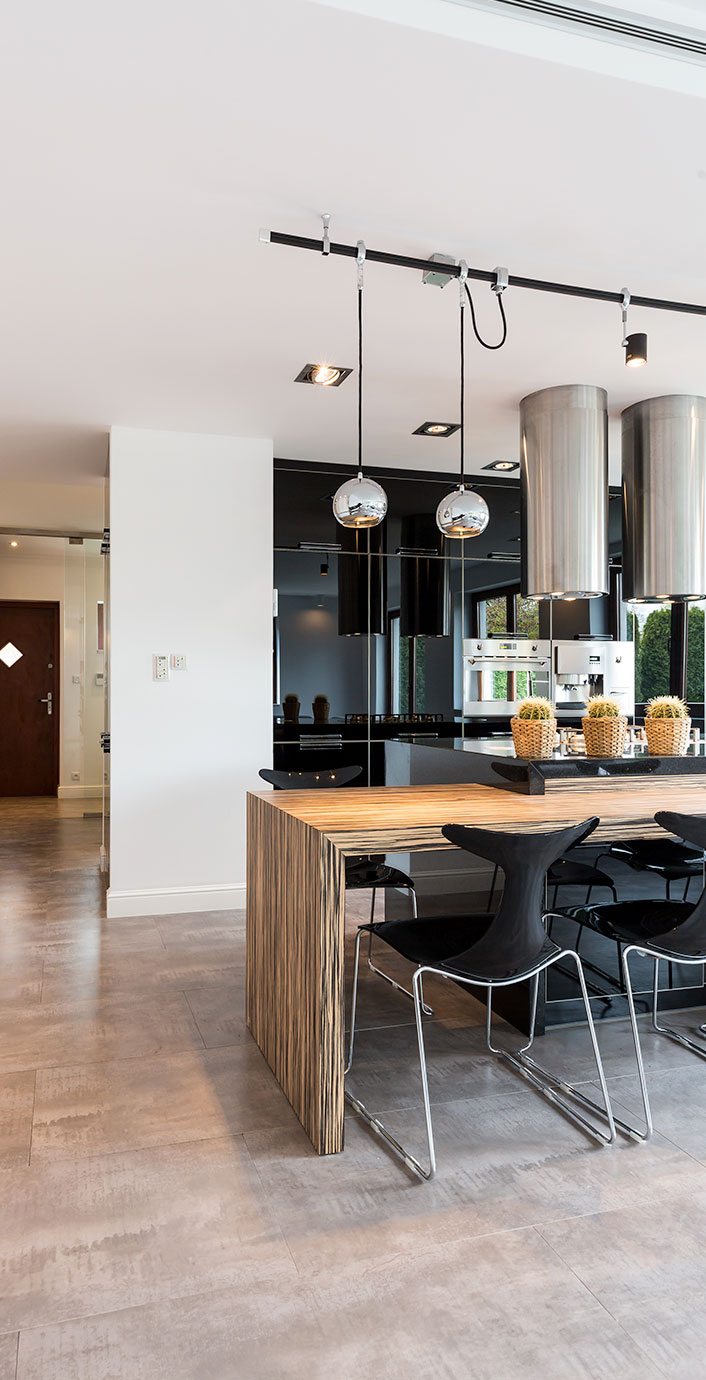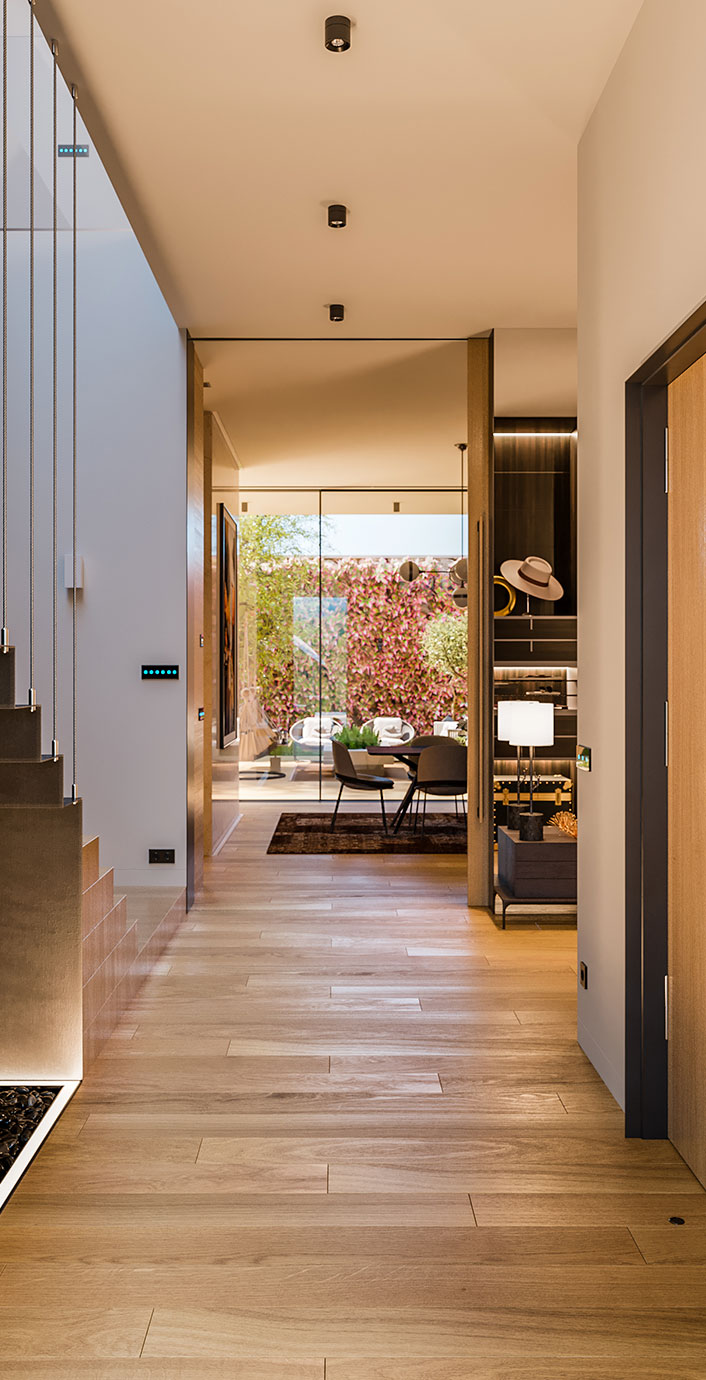
Minimalism isn’t about stripping everything back to the bare bones. It’s not cold, and it doesn’t mean empty white rooms and hard-edged furniture. At its heart, minimalism is about creating a home that feels calm, intentional and free of visual noise – somewhere that works effortlessly around your lifestyle, rather than demanding constant tidying, rearranging or compromise.
A minimalist home still needs warmth, personality and practical design – especially if you’re building or renovating a home you plan to live in for years. Here’s how to design a minimalist space that feels anything but bland.

Focus on space first
Minimalism starts with space – not just how much of it you have, but how it flows. A well-designed minimalist home will feel open and breathable, even if the footprint is modest.
This begins with layout. Think about how each room connects to the next and whether anything feels unnecessarily cramped, overfilled or awkward to move through. Where possible, opt for open-plan areas that allow light and people to move naturally. Use considered architectural features like low partitions, half-walls or internal glazing to maintain that sense of openness while still giving each zone its own feel.
Avoid designing ‘dead’ corners or overly specific nooks that don’t have a purpose. In a minimalist home, every space should be either functional, restful – or both.
And don’t forget negative space. Sometimes what you leave out is just as powerful as what you include. Breathing room between furniture, empty sections of wall, and uncluttered floors give your home that unmistakably calm, minimalist quality.

Choose a simple, cohesive palette
One of the most recognisable aspects of minimalist design is the colour scheme – but that doesn’t mean everything has to be stark white or grey. Instead, aim for a restrained, harmonious palette that flows from room to room.
Soft neutrals, off-whites, muted earth tones and gentle greys are ideal base colours. From there, layer in warmth through texture – think natural wood, linen, clay or brushed metal – rather than colour for colour’s sake. This keeps the space interesting and tactile without feeling busy or overdone.
Avoid overly patterned finishes or feature walls that break up the sense of flow. Instead, use tone-on-tone variation to add depth. For example, pairing a soft chalky wall paint with warm timber flooring, then adding natural woven fabrics through blinds or seating.
A minimalist home doesn’t need to be colourless – it just needs colour used with purpose. A single deep green chair or rust-toned cushion can be enough to add personality without pulling focus from the rest of the room.

Prioritise functionality in every design decision
Minimalism is, above all, functional. That means every design decision should serve a purpose – and if it can serve more than one, even better.
Start with the big decisions: furniture should be scaled to your room, comfortable to use, and genuinely necessary. Avoid filler pieces or anything included purely because you feel a space needs to be ‘filled’. If a sideboard isn’t storing anything, or a shelf is empty clutter, leave it out.
Look for built-in storage that blends into the architecture – full-height cupboards, hidden drawers in stairs, alcove shelving. These solutions keep surfaces clear without requiring extra furniture, helping maintain the clean lines that define a minimalist interior.

Lighting should also follow function. Use recessed fittings or wall lights that sit flush to the surface where possible. Strip LEDs under shelves or cabinetry create gentle illumination without visual clutter, while a few carefully chosen pendant lights or floor lamps can add shape and softness when needed.
When every piece has a clear purpose – and no more than necessary – your home naturally starts to feel calmer and more spacious.

Keep it personal – but edit ruthlessly
One of the myths of minimalism is that it’s impersonal. In reality, a minimalist home can still feel deeply personal – it just doesn’t shout about it. The key is curation.
Instead of filling shelves and surfaces with trinkets, choose a few meaningful pieces you genuinely love and give them space to shine. That might be a handmade ceramic bowl, a framed photograph, or a single sculpture or artwork that resonates with you.
Aim for quality over quantity. Fewer, better things. And remember that emptier surfaces make those objects feel more special, not less.
You can also bring in warmth and character through the materials and finishes you choose. Textured plaster, timber joinery, natural stone or handwoven fabrics – these all add personality in a subtle, enduring way.
Don’t be afraid of restraint. In a minimalist home, the absence of clutter is what allows the things that matter to stand out.

Build in longevity
Minimalism is as much a mindset as it is a style – and one of the key pillars of that mindset is longevity. A minimalist home shouldn’t need constant updates or seasonal refreshes to stay feeling current.
Instead of following trends, choose design elements that feel timeless and considered. Classic architectural details, simple joinery, and natural materials tend to age well – and feel relevant for years, not months.
Invest in things that are built to last. That might mean a slightly higher up-front cost, but you’ll be less likely to replace or update them later. This isn’t just practical – it’s more sustainable too.
Functionality plays a role here as well. A home that genuinely works for your lifestyle – whether that’s cooking, working from home, raising children, or simply switching off – is a home that lasts.

Final thoughts
A minimalist home isn’t about having less for the sake of it. It’s about removing what doesn’t serve you so that what’s left can do its job better – and feel more meaningful.
Done well, minimalism doesn’t feel empty or strict. It feels calm, purposeful and easy to live in. It gives you space to breathe, space to think, and space to enjoy your home for what it truly is: a place designed for the life you want to live.
As architects, we believe minimalist design should always be warm, human and deeply personal. If you’re planning a new home or rethinking your current space, we’d love to help you create something that feels beautifully pared back – but never lacking.

